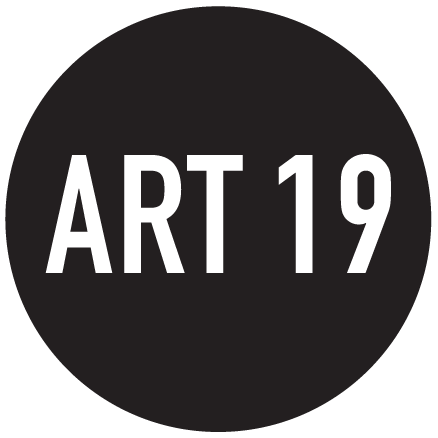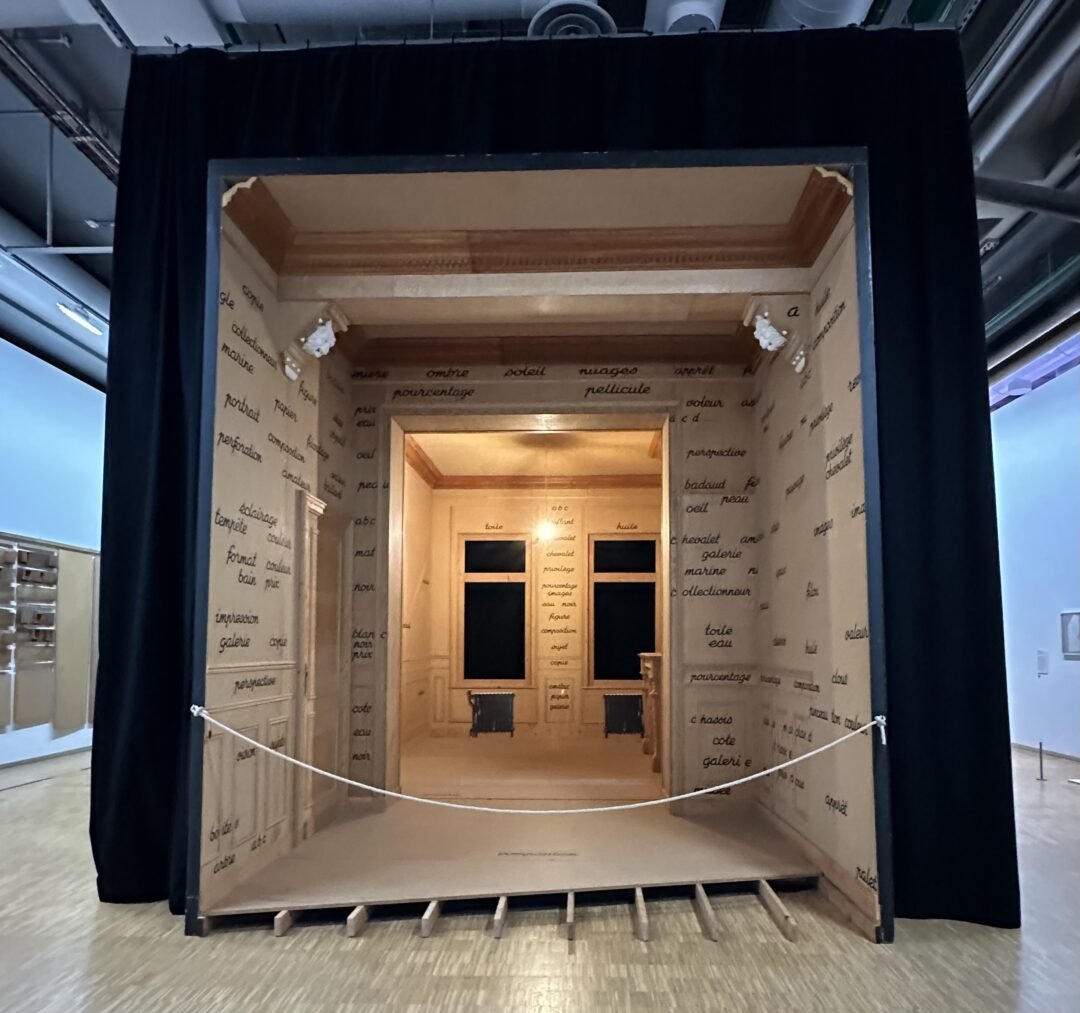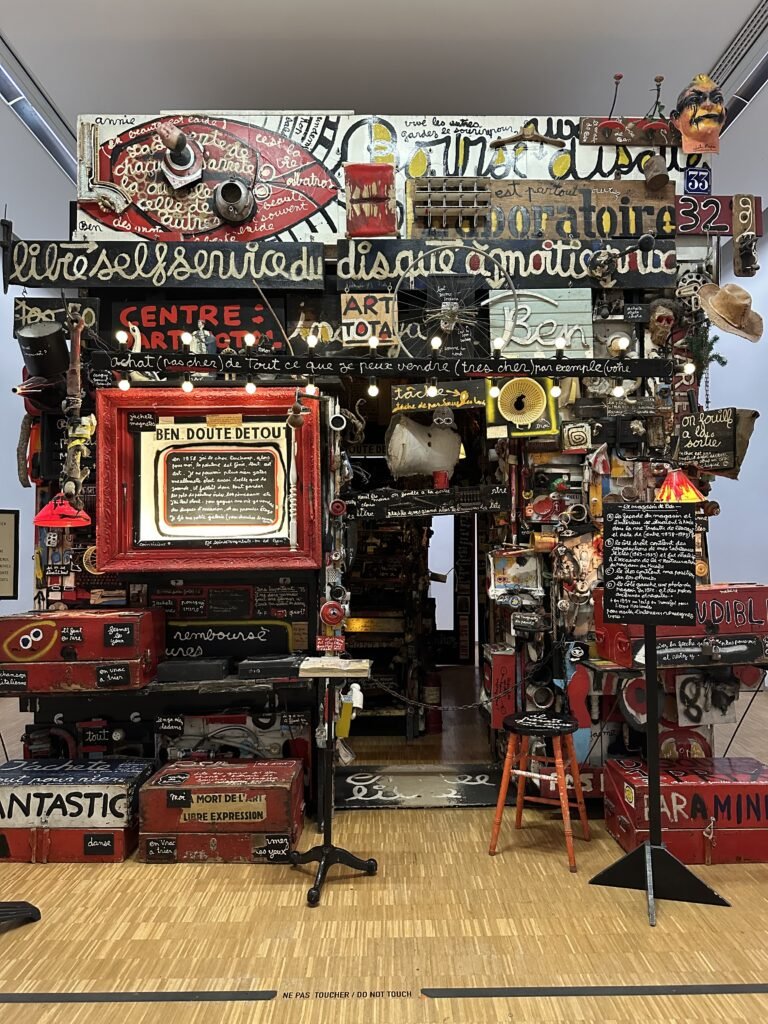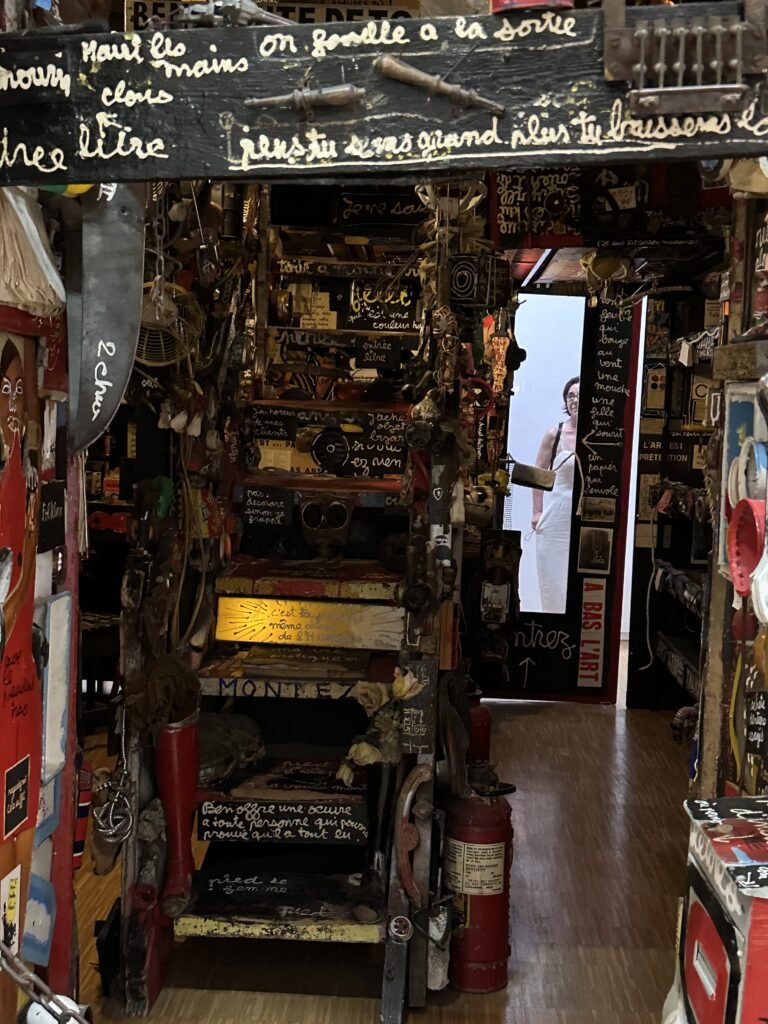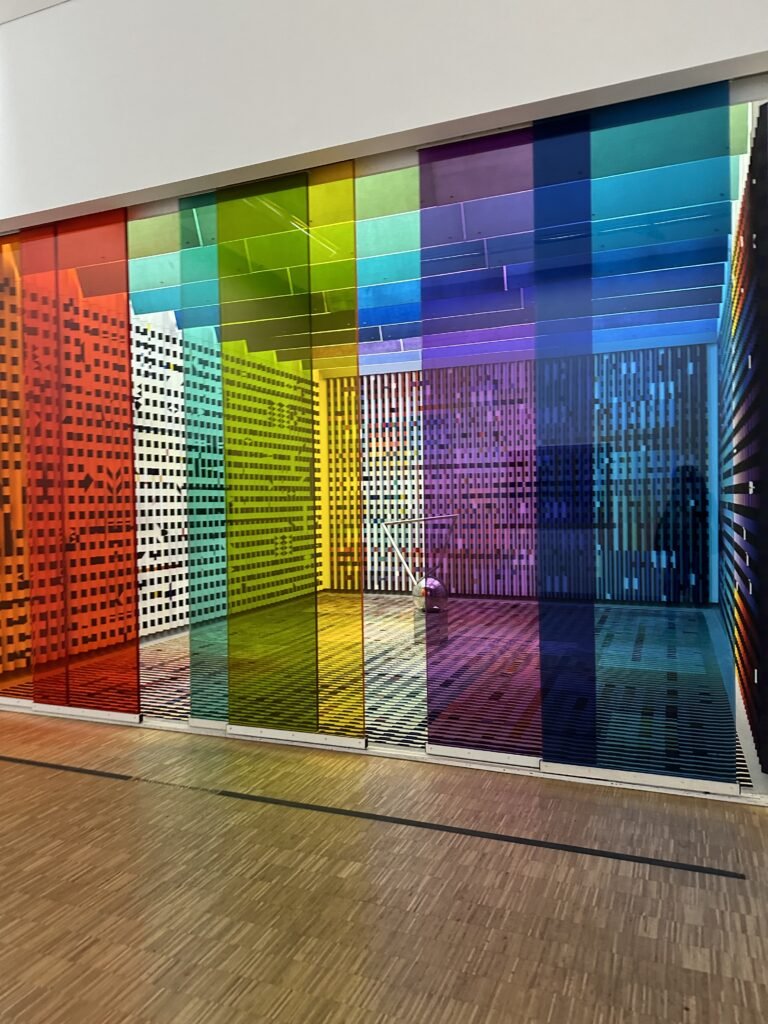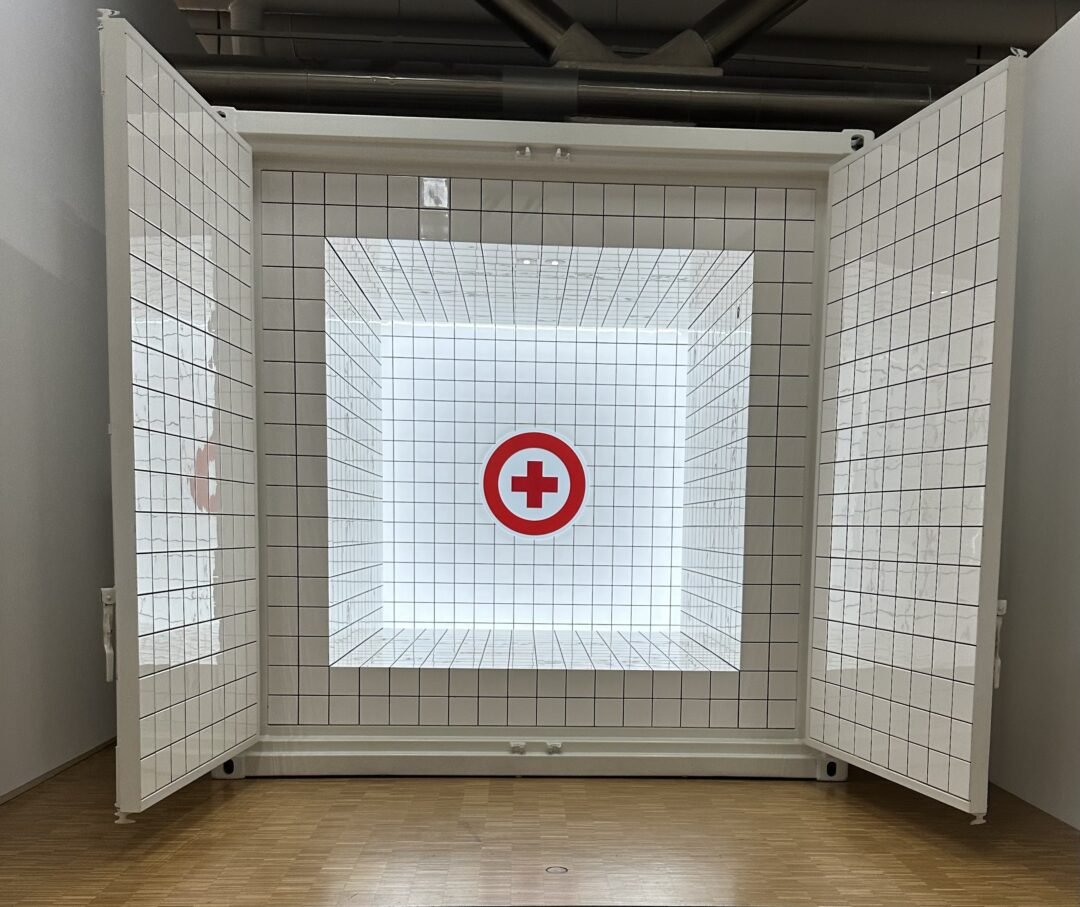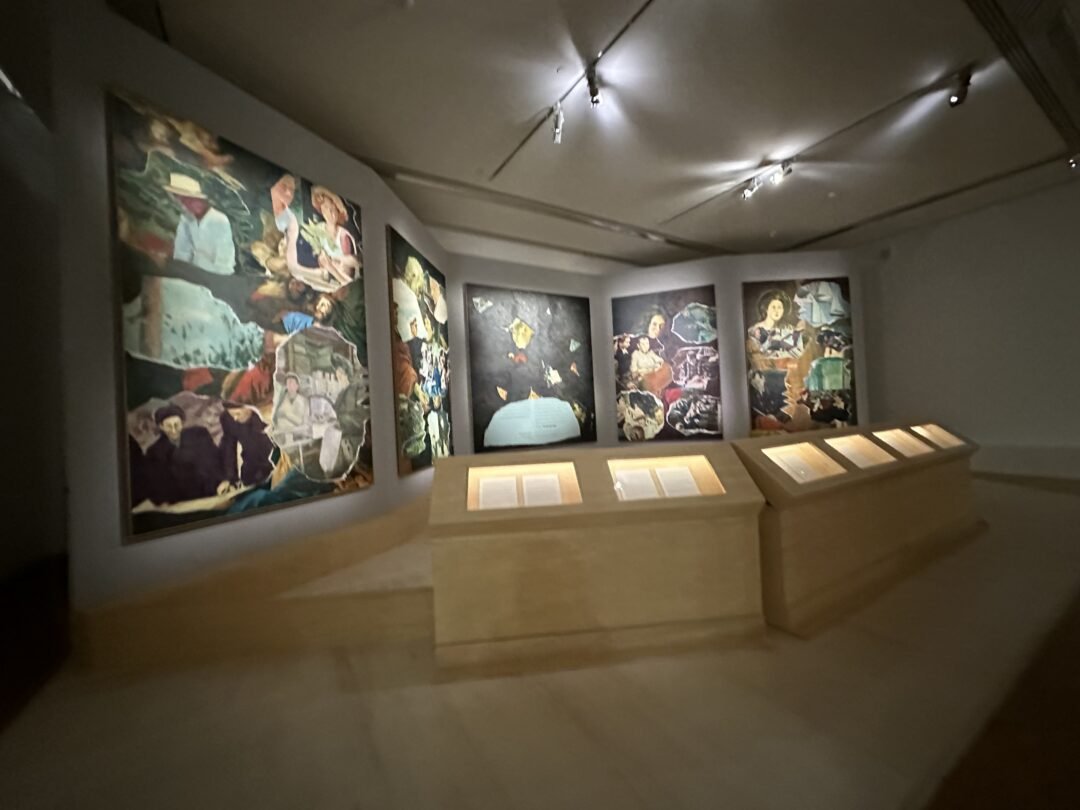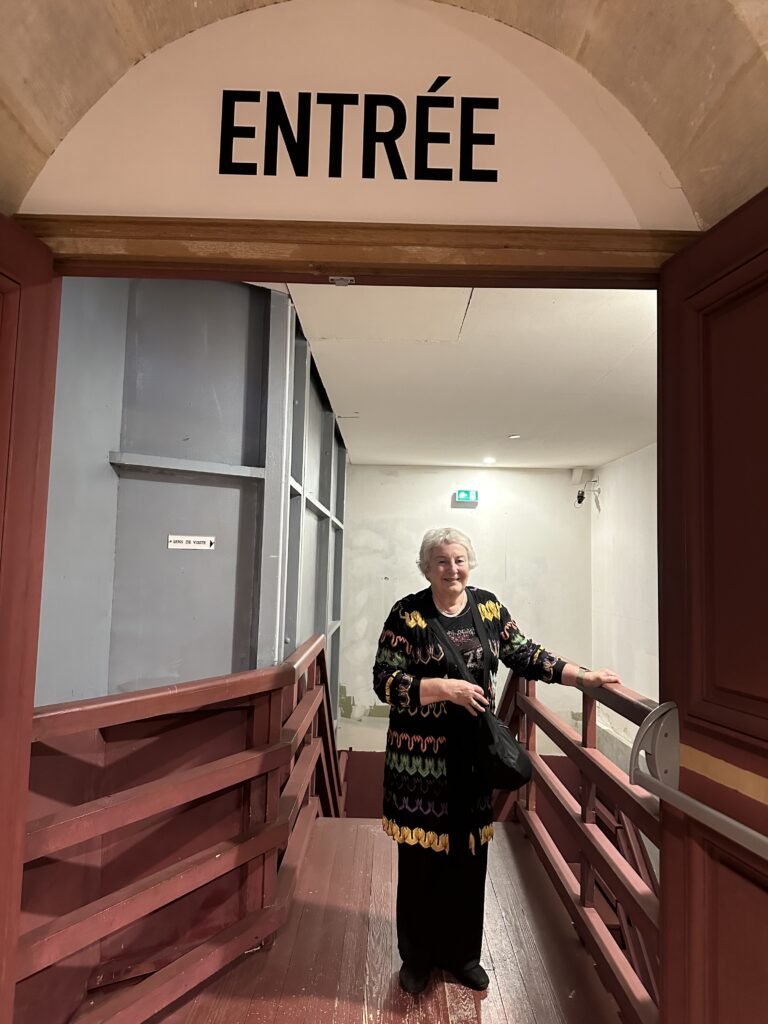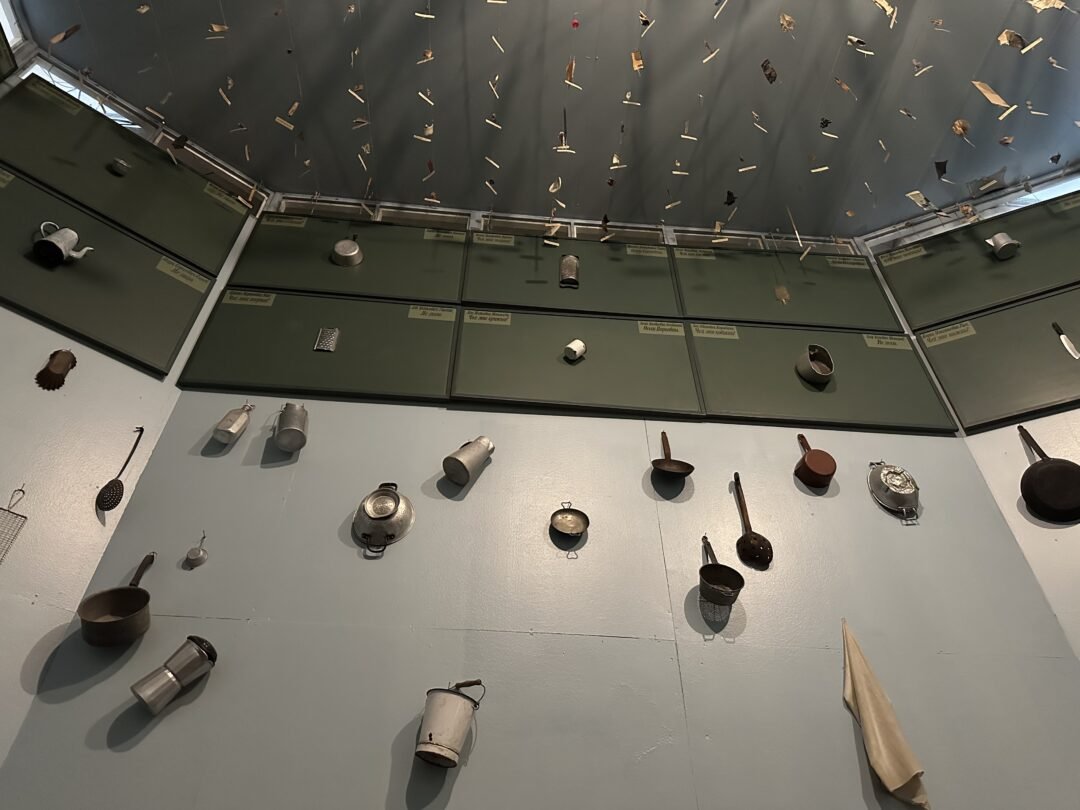Judith Benhamou Reports : The Kabakovs are still “Back in the U.S.S.R” with a diversion to Paris
Pompidou is closing
In September 2025 the Centre Pompidou is due to close its doors for the next five years. Yes, the building is in need of substantive restorations, but the news of such a long disappearance from the French art landscape of its emblematic institution has sent art lovers, quite understandably, into a state of shock.
Richard Jackson
Before it’s too late
So before it’s too late, why not visit or revisit this French gem for a tour of the permanent collections of contemporary art. First, because they’re laid out in spectacular fashion, like a true exhibition. Next, because they’re displaying some new things. We note every room is marked by a large installation dedicated to a particular artist.
Marcel Broodthaers
Le Magasin Fluxus by Ben
Ben
On the fourth floor of the building there is “Le magasin de Ben” (Ben’s Shop) (1958-1973), a transposition into the rooms of the real workspace/poetic mayhem belonging the artist Ben Vautier from Nice, who took his own life on 5 June 2024 at the age of 88. It’s like a giant readymade, on the scale of a real boutique shop but also a testament to the spirit of the Fluxus art movement – whose aim was an attempt to do away with divisions between art and life – to which he belonged.
Ben
Joseph Beuys
Then we find the extraordinary “Plight” from 1985 by German artist Joseph Beuys (1921-1986), an installation that’s entirely lined in rolls of felt, in the middle of which presides a grand piano that is eternally silent. It sends a message of security and isolation reminiscent of a mausoleum.
Yaacov Agam’s kinetic space
Agam
Moving through the rooms, there’s a sequence showing the reconstruction by Yaacov Agam of the antechamber to the private apartments of President Pompidou at the Palais de l’Elysée in 1974. It’s a multicoloured, kinetic space.
Raynaud, Penone, Dubuffet
Jean-Pierre Raynaud
Then there’s a container covered in white squares by French artist Jean-Pierre Raynaud from 1988, followed by the highly poetic “Respirez l’ombre” (Breathing the Shadow), a vast room wallpapered with laurel leaves by Giuseppe Penone, a conceptual and olfactive tribute to Laura, Petrarch’s lover, and the huge “Jardin d’hiver” (Winter Garden) conceived by Jean Dubuffet between 1968 and 1970. It resembles a big artificial cave to pace around, composed of large white blocks delineated by thick black lines…
The Kabakovs
The final episode of this feast of monumental installations is a new one. The Kabakovs, husband and wife duo Emilia (born in 1945) and Ilya (1933-2023), who created their artworks together, probably share one of the best known names in Russian contemporary art, but today they are American. They recently donated a series of five monumental works to the Centre Pompidou which, as usual, implicitly critique Russian totalitarian society, in this case from bygone days.
Emilia Kabakov
Against a baroque musical score, classical religious images are juxtaposed with reproductions of Russian photos from the 1950s that resemble souvenirs, appearing with a flash. “A temple telling history,” explains Emilia Kabakov, who talks to us about her choice to add a piece of music that creates a more solemn atmosphere, written by Venetian baroque composer Albinoni.
Cuisine Communautaire
People are often unaware of it but Paris already has an extraordinary monumental installation by Ilya Kabakov dating from 1987: “Cuisine Communautaire” (The Communal Kitchen). This kind of giant communist readymade is housed in the basement of the Musée Maillol in the district of Saint- Germain des Près. For now it is resting, inaccessible to the public.
Dug down 8 metres deep
Emilia tells us that Dina Vierny (1919-2009), well known for being the most famous model for the sculptor Maillol, dug down 8 metres deep to install the “Cuisine Communautaire” in the heart of her then-new institution. It is a sort of time capsule “from a time when people from the USSR were forced to live together in shared apartments. Each family was forced to give at least one bedroom to the community and everyone used the same bathrooms and the kitchen.”
Saved from the clutches of the KGB
The installation features an ensemble of everyday objects gathered by Ilya from Russia, with trivial texts and short extracts from conversations uttered in these shared kitchens “by people who didn’t want to live together. They hated each other but ultimately there was a great deal of solidarity,” concludes Emilia Kabakov, who likes to recall how one of the family’s housemates, a prostitute by trade, saved Emilia’s father from the clutches of the KGB.
That was another time, another Russia, brought back to life by the Kabakovs.
Article published on https://judithbenhamouhuet.com
